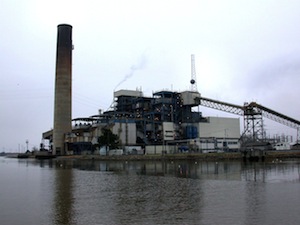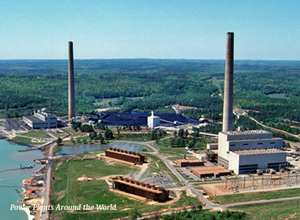
Southern Alliance for Clean Energy applauds Georgia Power’s January 7 announcement that it will seek approval to retire several of its least economical, oldest, and dirtiest electric generators – 2061 MW worth of mostly coal-fired units, plus a handful of smaller oil-fired units. We’re glad the company is finally seeking retirement of these units; the decision is welcome news for ratepayers and for public health in Georgia, and indicates a very positive step toward decreasing Georgia’s reliance on coal.
Georgia Power’s own studies in 2011 showed that several of the coal-fired units on the retirement list aren’t economical to run, though it put off retiring them at that time. The Union of Concerned Scientists labeled them among those “Ripe for Retirement” in its November 2012 report highlighting the nation’s most uneconomic coal-fired units, along with several other coal-fired generators the company currently plans to convert to burn gas or upgrade with pollution controls (look out for an upcoming blog with our perspectives on retiring these units instead).
Coal plant retirements are an important step toward modernizing Georgia Power’s system and cleaning up its generation mix. We hope they will be accompanied by an increased commitment to energy efficiency and renewable energy when Georgia Power submits its requests to the Public Service Commission on January 31, 2013, as part of its updated Integrated Resource Plan, the long-term energy resource scheme it files every three years.
Georgia Power will request permission from the Public Service Commission to decertify (officially retire) the remaining two generators at Plant Harlee Branch near Milledgeville (units 1&2 were approved for decertification last year and will be taken offline later this year), all three coal-fired units at Plant Kraft near Savannah, and the five oldest units of the seven at Plant Yates (the company wants to convert the remaining two to burn natural gas). It would also retire an oil-fired generator at Plant Kraft and two more at Plant McManus, located on Georgia’s coast.

The coal-fired units on the retirement list are among the oldest in the nation – at 44-63 years old, they’re significantly older than the 30-year expected lifetime of a typical coal-fired boiler unit. Because of their age and design, these units are less efficient at converting coal to electricity than more modern generators, and therefore are only utilized at 34% of their capacity. It’s an inefficient use of a generation resource that should be replaced. The units also lack key modern pollution controls. Georgia Power is requesting that these plants go offline completely by April 16, 2015, the date by which plants must comply with EPA’s new mercury pollution standards (known as MATS).
The one exception is Plant Kraft, for which the company plans to request a further year of service under a one-year MATS compliance extension. SACE’s Executive Director, Stephen Smith, told the Savannah Morning News: “I don’t want say that’s unreasonable; I think, though, in actuality it’s a reflection that if they hadn’t spent so much time fighting the regulations and EPA and spent more time engineering and accepting it was the right move for ratepayers and the environment, they could’ve been on schedule.”
Georgia Power plans to replace power from the plants with power from existing natural gas plants, which it agreed to purchase last year when it filed to decertify the first two units at Plant Branch. SACE argued before the Public Service Commission at the time that the units at Branch and Yates were uneconomical and should be retired as soon as possible, so we are glad to see the company taking action (download our arguments here). The utility also plans to supply at least 200 MW of energy from solar power over the next 3 years as part of its Advanced Solar Initiative.

We hope that over the next two years Georgia Power will accommodate workers at these plants, including preparing them to work on cleaner technologies like wind and solar. Both technologies have established a manufacturing foothold in Georgia that is expected to expand, especially if Georgia Power increases its use of these technologies.
We look forward to seeing Georgia Power’s complete Integrated Resource Plan at the end of January, and keeping you informed about its provisions for additional retirements, renewable energy, and energy efficiency.